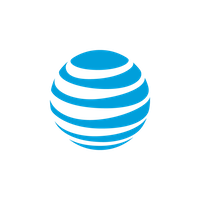AT&T and University of Minnesota Extension Service Introduce goCyberCamp™
Published 02-13-03
Submitted by AT&T Inc.
The AT&T Family Care Development Fund - a joint initiative of AT&T and its two unions, the Communications Workers of America and the International Brotherhood of Electrical Workers – is funding the Web site’s development and start-up with a $1.3 million grant.
goCyberCamp is an online learning environment that provides children with a window to the outdoors and camp culture in educational but game-like settings. It also allows them to interact with other “campers” who are registered to use the site. The program initially was designed to help children who have never been to camp become familiar with nature and camp routines - such as campfire safety and traditional camp songs - through activities that blend learning, fun and technology.
goCyberCamp requires no special software, so registered campers can access the Web site anytime and anywhere. They need only “hike” across the keyboard and bring their own sleeping bag and marshmallows. Access is limited to registered, authenticated campers and staff in order to provide a safe online environment. The program provides both online and offline activities that are easy to integrate with school-age childcare programs. Children can also access the site from home during out-of-school time. Special online programming will be available during planned school breaks when ordinary childcare arrangements and activities may be extended.
goCyberCamp is a non-commercial Web site: No advertisements or banners are used, and no commercial products are incorporated into the games and activities. goCyberCamp is also a “closed site,” meaning there are no links to other external web sites. Additional security for campers is provided through “bots,” computer programs that automatically monitor the online interactions to prevent inappropriate language, for example.
“We’re happy to partner with the University of Minnesota to enhance the quality of youth programs offered during out-of-school hours in the communities where our employees live and work,” said Mirian Graddick-Weir, Executive Vice President of Human Resources at AT&T. “The beauty of goCyberCamp is that children can participate as ‘virtual campers’ from wherever they are: At home, an after-school program, the library, a community center or local YMCA, grandma’s house, or some other place with access to the Internet.”
“We’re delighted to launch goCyberCamp with support from the AT&T Family Care Development Fund,” said Dr. Dale Blyth, Associate Dean for Youth Development at the University of Minnesota. “Young people today need safe environments that can challenge and engage them in new ways. We believe goCyberCamp is a unique way to bring 4-H’s long tradition of exciting, hands-on learning into cyberspace. This private-public partnership will help thousands of children all over the country learn about science and the environment.”
Once they’ve registered, campers can enter the online “camp entrance” (Main Lodge) and choose which area of the camp they want to visit – such as Meadow, Lake or Woods. Activities in each area combine learning with plenty of fun and creativity – with no danger of stepping on snakes or getting bug bites. Each activity takes 12 to 15 minutes to complete – for example, learning about swimming and canoeing techniques.
A nine-year-old girl from Minnesota who previewed goCyberCamp especially liked a game called Fish Factory. In this activity, children have fun “building” their own fish as they learn what parts of a fish enable it to swim and survive in its natural habitat.
Campers also can elect to become part of a virtual cabin – that is, a small group of children and an adult camp counselor that meets online regularly. These cabins are meant to foster some of the camaraderie children would experience at an actual summer camp. Counselors are recruited from various organizations, universities and businesses based on their experience, content expertise and interest in working with children online. They must pass background and reference checks before working with goCyberCamp.
Campers and care providers may sign up to join goCyberCamp at no charge at http://gocybercamp.org. The Camper Enrollment form and Caregiver Application form are available online. Campers must obtain a parent or legal guardian’s permission to enroll, and care providers also must obtain the parent or guardian’s permission for each child to participate. After authentication of the information submitted, an email message will be sent to confirm activation of the camper or caregiver account.
The goCyberCamp project staff is responsible for ongoing administration and monitoring of the site, and for refreshing its content. Content providers include professors of curriculum design and science education from land grant universities, as well as distance learning specialists from various informal learning programs such as natural history museums.
Although project headquarters is located at the University of Minnesota, the team works closely with faculty and staff located at land grant universities around the country, especially the University of Nebraska, North Carolina State University, Ohio State University and New Mexico State University.
About the AT&T Family Care Development Fund:
The AT&T Family Care Development Fund is a joint initiative of AT&T and its two unions – the Communications Workers of America and the International Brotherhood of Electrical Workers. The Fund was created in 1989 to increase the quality and availability of child and elder care services in communities where AT&T employees live and work
About the University of Minnesota Extension Service:
The University of Minnesota Extension Service is a unique partnership between the University and citizens and communities throughout Minnesota. With offices in every county, Extension addresses the local critical issues facing Minnesota citizens and communities by connecting them with the university’s research and resources. Extension faculty and volunteers across the state provide information and educational programs in the following topics: land, food and environment; youth development and family living; and community vitality. Extension’s specific goal in youth development is to make a difference in the quality, quantity, accessibility and impact of out-of-school programs.


